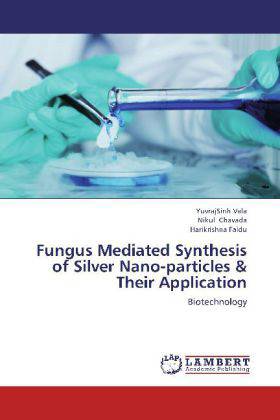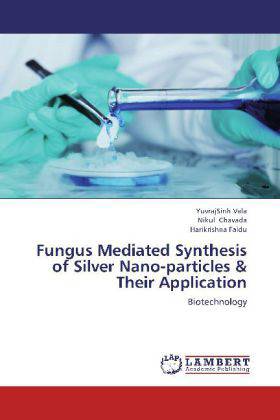
Je cadeautjes zeker op tijd in huis hebben voor de feestdagen? Kom langs in onze winkels en vind het perfecte geschenk!
- Afhalen na 1 uur in een winkel met voorraad
- Gratis thuislevering in België vanaf € 30
- Ruim aanbod met 7 miljoen producten
Je cadeautjes zeker op tijd in huis hebben voor de feestdagen? Kom langs in onze winkels en vind het perfecte geschenk!
- Afhalen na 1 uur in een winkel met voorraad
- Gratis thuislevering in België vanaf € 30
- Ruim aanbod met 7 miljoen producten
Zoeken
Fungus Mediated Synthesis of Silver Nano-particles & Their Application
Biotechnology
YuvrajSinh Vala, Nikul Chavada, Harikrishna Faldu
Paperback | Engels
€ 62,45
+ 124 punten
Omschrijving
Present study attempt were made to isolate the fungus capable of synthesizing silver nanoparticles Eighteen different fungal cultures were used for primary screening amongst which seven cultures viz., A. flavus, F. oxysporium, T. versicolor, P. ostreatus, Alt. brunsii 1, isolate 1072 and isolate 6 were found to synthesize silver nanoparticles. Amongst all cultures, Aspergillus flavus was found to be most potent and exhibited extracellular synthesis of silver nanoparticles. The production of silver nanoparticles was investigated using UV-Visible spectrophotometry and SEM. Alternatively, spherical, uniform size (44nm) silver coated silica nanoparticles were chemically synthesized and employed for immobilization of laccase produced by T. versicolor. For immobilization experiments, laccase was produced using T. versicolor and partially purified using isopropanol precipitation with 68% recovery and 6.2 fold purification.
Specificaties
Betrokkenen
- Auteur(s):
- Uitgeverij:
Inhoud
- Aantal bladzijden:
- 60
- Taal:
- Engels
Eigenschappen
- Productcode (EAN):
- 9783659191336
- Verschijningsdatum:
- 14/11/2012
- Uitvoering:
- Paperback
- Afmetingen:
- 150 mm x 220 mm
- Gewicht:
- 100 g

Alleen bij Standaard Boekhandel
+ 124 punten op je klantenkaart van Standaard Boekhandel
Beoordelingen
We publiceren alleen reviews die voldoen aan de voorwaarden voor reviews. Bekijk onze voorwaarden voor reviews.









